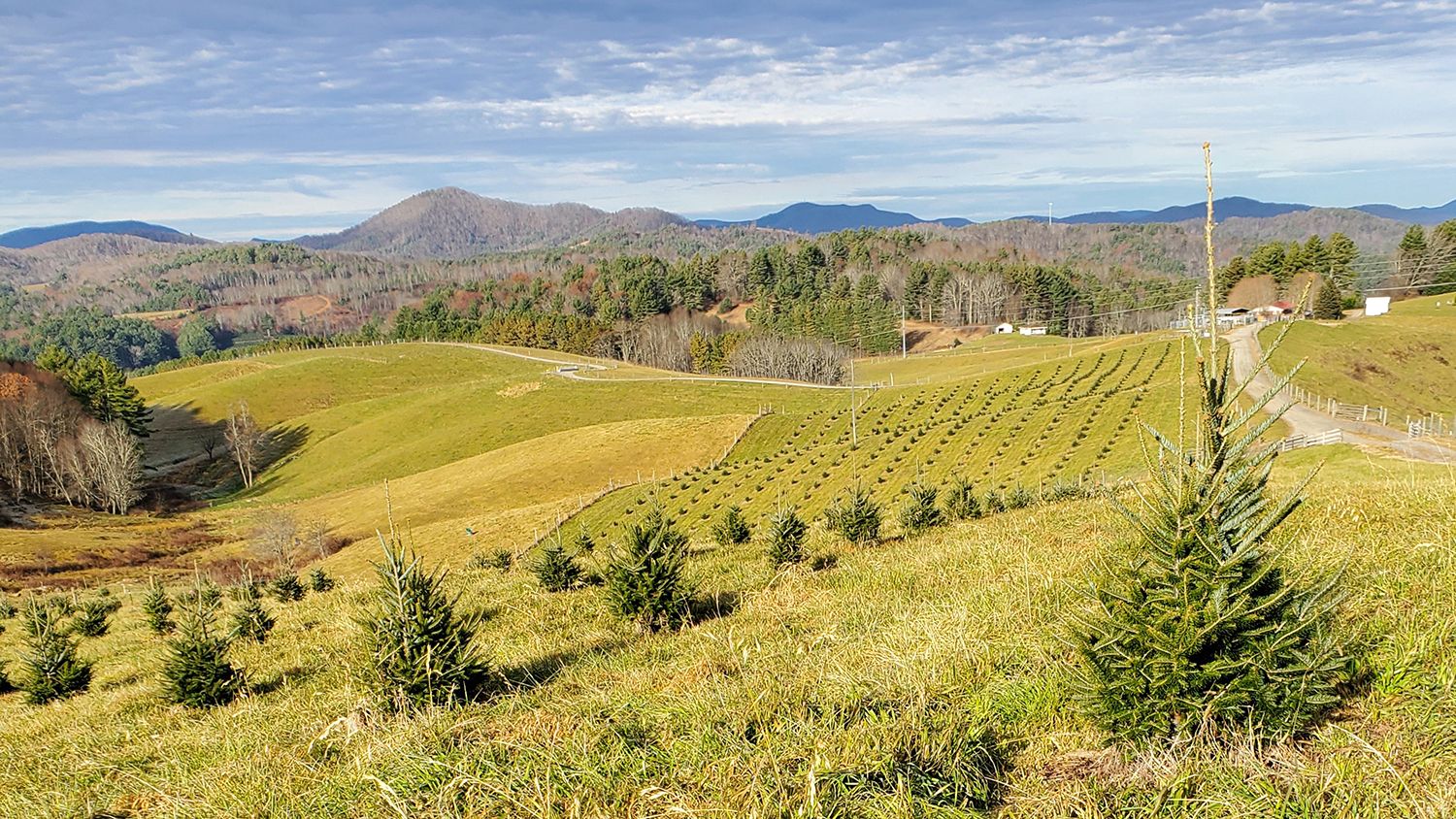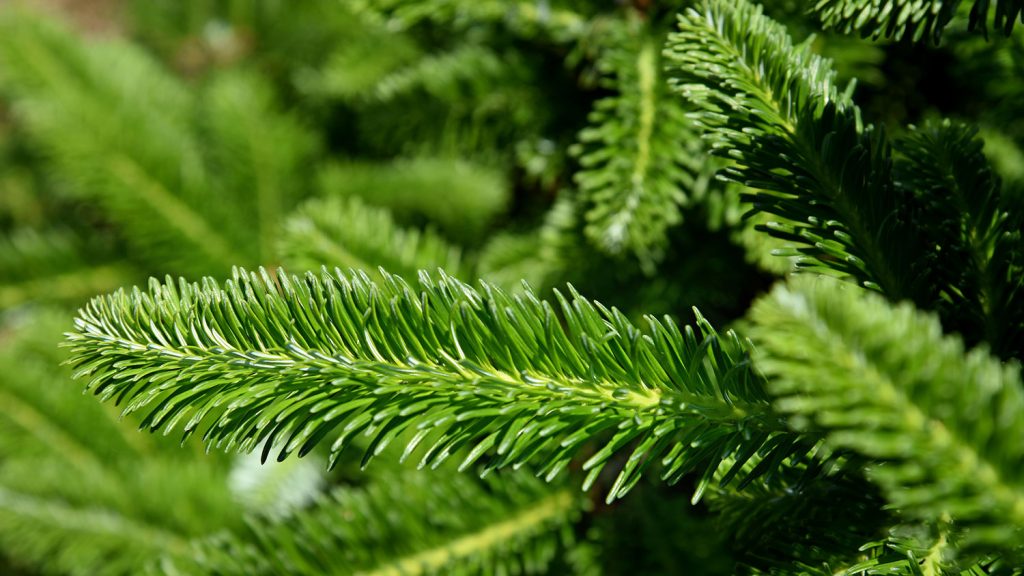Oh, Christmas Tree

It may not look impressive right now, but a 5.5-acre Christmas tree orchard at the Upper Mountain Research Station could have a big impact on the future of North Carolina’s $86 million Christmas tree industry.
The trees are now just 2- to 4-feet tall, but as they mature over the next 10 years, they will yield Fraser fir seeds that grow into Christmas trees with characteristics that consumers and farmers want.
Jeff Owen, an NC State Extension Christmas tree specialist who helped with the orchard project, said that he expects the trees to grow faster and more uniformly. Not only that, they’ll also keep their needles longer and hold up well through the holiday season.
How Lovely (and Uniform) Are Thy Branches
Fraser firs are among the country’s five most popular types of Christmas trees. They’re native to the Appalachian Mountains and grow particularly well in the high country around the research station.
Producers often use wild seed, but that presents challenges. As Owen explained, “Wild seed is highly variable. Growers would have one tree that was good quality, and its neighbor might not be very good at all.”
An estimated 90% of North Carolina growers get most of the seedlings they plant from nurseries in the Pacific Northwest, according to Brad Edwards, an integrated pest management assistant with North Carolina Cooperative Extension in Ashe County.
What the growers need, Edwards added, is a reliable source of certified seeds – ones that have known parents and that are handled in ways that maintain their genetic purity. “Right now,” he said, “there’s no certified seed for Fraser fir.”
The seed orchard will change that.
How Sturdy Are Thy Roots
The orchard “is the culmination of decades worth of research done through NC State’s Christmas tree genetics program, led by Professor John Frampton,” said Owen, of NC State’s College of Natural Resources. “John retired this summer, and as the world’s most advanced Fraser fir genetic resource, the orchard is his legacy.”
Ultimately, Owen said, farmers will be able to select seeds from the orchards based on their parents’ performance.
“A farmer will be able to say, ‘I want trees with optimum needle retention,’ and they can go and get seed from that grouping,” he said. “Or maybe they’re interested in having a more uniform growth of the tree or a shorter rotation. They can pick out those characteristics as well, because each parent is known.”

Planning, developing and maintaining the orchard has been a group effort that began with Frampton more than 20 years ago.
Recognizing the value of these Fraser fir selections, Frampton brought together extension and research station personnel to get the improved germplasm into the hands of as many growers as possible, as soon as possible. CNR Research Specialist AnneMargaret Braham has also been instrumental.
The team decided there was no better place for the orchard than at the Upper Mountain Research Station. The station is in the heart of North Carolina’s Christmas tree production area. In fact, it’s in the nation’s No. 1 county for Christmas tree production, Ashe County.
The station also has a strong history of carrying out a range of research instrumental in helping the state’s industry grow to be the second-largest in the nation.
The orchard started with the planting of another tree species, the Canaan fir. The Canaan fir has what Owen termed a “more aggressive root system” that protects it from Phytophthora root rot, which is particularly problematic for Fraser firs.
Fifteen people, including growers, spent two days in 2018 grafting the rootstocks to what’s called the scion – the above-ground parts – of selected Fraser firs.
The station’s superintendent, Tracy Taylor, and his staff have played a crucial role in the orchard’s progress. They provide the orchard’s 1,400 trees the day-to-day care they need. “We take care of diseases and insects, wildlife, ground cover management, fertility – all of those things,” he said.
Helping Thy Future Shine So Brightly
Owen believes that when it matures, the orchard will deliver “a huge savings for Christmas tree growers.”
The average field takes 10 years to be fully harvested, he said. “We may be able to cut two years off that timeline, so that’s 20% of the time. All of that puts money back in a grower’s pocket, after they’ve made the long-term investment that it takes to grow a Christmas tree.”
The grafts have been successfully established, and the trees are getting bigger.
“We’ve still got a long way to go,” Owen said, “but we are going to baby this along and watch these trees grow – and to aim for the first seed harvest in 2030.”
Learn more about North Carolina Christmas Trees on Extension’s online video series Homegrown.
- Categories:


